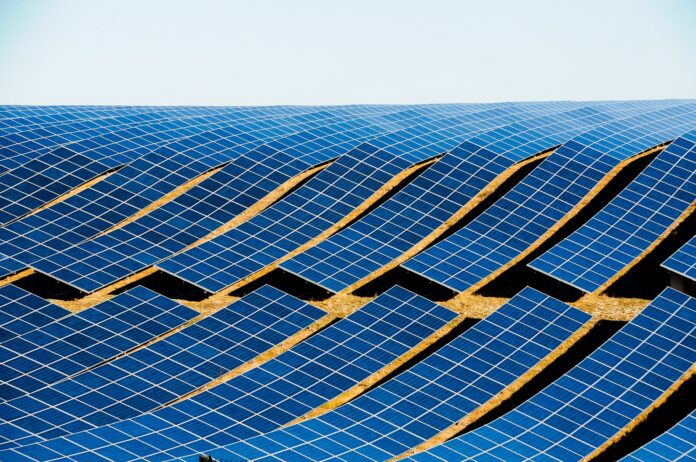In the global pursuit of sustainable energy solutions, the solar energy sector has witnessed remarkable progress and innovation. Among these advancements, thin film technology has emerged as a game-changer, redefining the conventional approach to solar panel design and functionality.
Understanding Thin Films
Thin film technology involves the application of photovoltaic materials in exceptionally thin layers, often measuring just a few micrometers. These materials—such as cadmium telluride (CdTe), amorphous silicon (a-Si), and copper indium gallium selenide (CIGS)—are deposited onto substrates like glass, metal, or flexible polymers. The resulting thin film solar panels not only offer a sleek and modern aesthetic but also present numerous advantages, including reduced weight, enhanced flexibility, and increased adaptability to diverse environments.
The manufacturing process for thin film solar panels stands in stark contrast to the more complex and resource-intensive methods employed in traditional crystalline silicon panels. By requiring fewer materials and streamlined production processes, thin film technology significantly lowers manufacturing costs while maintaining functionality and efficiency.
Preceding Methods for Solar Panel Coverage
Crystalline Silicon Panels
The traditional solar panels primarily comprised crystalline silicon cells, known for their efficiency and durability. These panels used thick layers of crystalline silicon arranged in a grid-like structure, which, while effective, posed challenges in terms of weight, inflexibility, and higher production costs.
Glass Coverings
To protect the delicate silicon cells within solar panels, manufacturers utilized glass coverings. These coverings shielded the photovoltaic cells from environmental elements, ensuring their longevity and functionality. However, the use of glass added weight to the panels and limited their flexibility, restricting their applications to certain surfaces and structures.
Rigid Structures
The earlier solar panels were predominantly rigid in structure, limiting their adaptability to specific installation settings. These panels were designed to be mounted on rooftops or open spaces with ample sunlight exposure. Their fixed and rigid nature restricted their use in unconventional environments or in applications requiring flexibility.
Encapsulation Techniques
Encapsulation methods were employed to protect the internal components of solar panels. Encapsulation involved sealing the photovoltaic cells within protective layers to safeguard them from moisture, temperature fluctuations, and other environmental factors. However, these encapsulation methods often added bulk to the panels, making them heavier and less versatile.
Frame Designs
Frame designs were implemented to provide structural support and stability to solar panels. These frames, typically made of aluminum or steel, helped secure the glass coverings and encapsulated cells in place. While frames added rigidity and support, they contributed to the overall weight and limited the adaptability of the panels.
Advantages of Thin Film Solar Panels
Cost Efficiency
The primary allure of thin film solar panels lies in their exceptional cost-effectiveness. The reduction in material usage during production translates to substantial cost savings. Furthermore, their lightweight nature simplifies transportation and installation, leading to decreased logistical expenses. As a result, these panels emerge as an economically feasible option for harnessing solar energy, especially in large-scale projects.
Flexibility and Versatility
The flexibility exhibited by thin film solar panels marks a pivotal advantage in their design. Unlike rigid and bulky traditional panels, thin film technology enables these panels to conform to various surfaces and structures. This inherent flexibility allows for integration into curved surfaces, building facades, and even portable devices. The adaptability of thin film technology opens up new avenues for incorporating solar energy into unconventional environments and everyday objects, expanding the scope of solar power utilization.
Higher Energy Conversion Efficiency
Although historically lagging behind traditional silicon-based solar panels in efficiency, ongoing research and development endeavors aim to bridge this gap. Innovations in material composition, surface engineering techniques, and manufacturing processes strive to optimize light absorption and electron generation within the thin film layers. These advancements aim to enhance overall conversion rates, positioning thin film panels as increasingly competitive within the solar energy market.
Challenges and Innovations
Efficiency Enhancement
Maximizing the efficiency of thin film solar panels remains a central focus in research and development efforts. Innovations in materials, particularly the integration of advanced nanomaterials, aim to optimize the absorption of sunlight and the subsequent generation and movement of electrons within the thin film layers. By enhancing these fundamental processes, researchers endeavor to boost the overall conversion rates of thin film panels, thereby improving their efficiency and energy output.
Durability and Longevity
The long-term durability of thin film solar panels poses a significant challenge. Exposure to environmental elements such as moisture, temperature fluctuations, and ultraviolet (UV) radiation can impact the performance and lifespan of these panels. Ongoing research initiatives are dedicated to developing robust protective coatings and advanced encapsulation methods to shield thin film panels from environmental stressors. By enhancing their resilience, these efforts aim to extend the operational lifespan of thin film solar panels.
Future Prospects
The future trajectory of thin film solar technology appears promising, marked by a continuous influx of advancements and innovations. Research and development initiatives remain committed to addressing current limitations and further refining the efficiency, durability, and cost-effectiveness of these panels. As these technological breakthroughs progress, thin film technology is poised to play an increasingly pivotal role in propelling the widespread adoption of solar energy on a global scale.
However, in the ever-evolving realm of solar energy, several cutting-edge advancements are poised to follow the era of thin film technology. Perovskite solar cells promise heightened efficiency and cost-effectiveness. Research focuses on stabilizing these cells for commercial viability. By layering different cell materials, tandem cells optimize sunlight absorption, potentially surpassing single-junction cells in efficiency. Ongoing studies aim to refine their designs for improved performance. Carbon-based OPVs offer flexibility and affordability, undergoing refinement to enhance stability and efficiency.
Conclusion
In conclusion, the advent of thin film technology marks a significant milestone in the evolution of solar energy solutions. Its cost-efficiency, flexibility, and ongoing advancements in efficiency position it as a formidable contender in the solar panel market. With sustained innovation and refinement, thin film solar panels hold the potential to catalyze the widespread adoption of sustainable energy solutions, contributing substantially to a greener and more sustainable future for generations to come.










